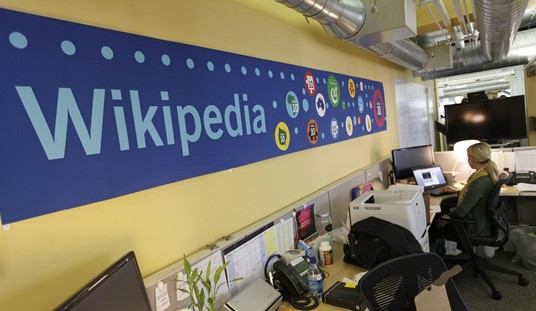Reuters broke out the U-word today to explain this significant reversal in this admittedly volatile metric. The Department of Labor reported that weekly initial jobless claims rose 51,000 over last week’s report, which also got revised upward by 8,000 as well. It was enough, however, to push the more reliable four-week rolling average upward slightly, potentially signaling less momentum in hiring than anticipated for July:
In the week ending July 17, the advance figure for seasonally adjusted initial claims was 419,000, an increase of 51,000 from the previous week’s revised level. The previous week’s level was revised up by 8,000 from 360,000 to 368,000. The 4-week moving average was 385,250, an increase of 750 from the previous week’s revised average. The previous week’s average was revised up by 2,000 from 382,500 to 384,500.
The advance seasonally adjusted insured unemployment rate was 2.4 percent for the week ending July 10, unchanged from the previous week’s unrevised rate. The advance number for seasonally adjusted insured unemployment during the week ending July 10 was 3,236,000, a decrease of 29,000 from the previous week’s revised level. This is the lowest level for insured unemployment since March 21, 2020 when it was 3,094,000. The previous week’s level was revised up 24,000 from 3,241,000 to 3,265,000. The 4-week moving average was 3,338,000, a decrease of 44,000 from the previous week’s revised average. This is the lowest level for this average since March 21, 2020 when it was 2,071,750. The previous week’s average was revised up by 6,000 from 3,376,000 to 3,382,000.
That’s the highest level in two months. Needless to say, that’s hardly the direction one would expect after the promises made regarding massive tranches of stimulus. Ever since peaking in the spring of 2020 at massively high levels, initial claims have declined ever since, although it plateaued last summer as well while confusion reigned over restrictions and reopenings. Only after the vaccines made an impact and states removed restrictions on commerce did those numbers come back down to near-normal levels.
The larger problem for unemployment isn’t in these initial claims, however. It’s in the continuing claims for pandemic-relief programs. Those levels have come down considerably over the last few months, but we still have over nine million continuing claims, triple that of normal state-level unemployment claims covered in the DoL’s unemployment rate:

The continuing claims in these pandemic programs dropped by 1.1 million over the last week, likely due to governors cutting off access to the programs in several states. That still leaves more than nine million claims continuing into July despite the lifting of most if not all commerce restrictions in all states at this point. The sidelining of this much labor keeps contributing to shortages in goods and services, which has not just pushed prices higher but also forced businesses to postpone or turn away sales and income. That itself has a deleterious impact on job creation that goes beyond the distortion in the labor markets that these pandemic benefits have created and are continuing.
Reuters wasn’t the only outlet taken by surprise by the sudden reversal. CNBC also broke out the U-word:
U.S. stock index futures were flat as an unexpected jump in jobless claims kept investors on edge about the economy.
Futures contracts tied to the Dow Jones Industrial Average were just 5 points higher, off their highs of the overnight session. S&P 500 futures were flat. Nasdaq 100 futures added 0.2%.
Jobless claims unexpectedly rose to 419,000 last week, higher than the 350,000 Dow Jones estimate and more than the upwardly revised 368,000 from the previous period, the Labor Department reported Thursday.
What does this mean for the July jobs report? It’s tough to say, but we do seem to have a lot of new jobless claims — and those are almost certainly from people who weren’t in the pandemic-relief programs. It’s an indication that we may see more disappointing figures two weeks from now, where the numbers are objectively decent but still don’t indicate the kind of pent-up job demand that we expect. That may end up stinging the White House as they attempt to defend that third massive stimulus package, the primary product of which has been inflation rather than growth.
And speaking of inflation and the Biden administration:
A top party pollster and senior adviser to the Biden political team is urging Democrats to confront the problem of rising prices — which she says is starting to bite with voters.
Driving the news: Celinda Lake, who polled for the Biden presidential campaign and still advises Team Biden, told Axios that worries about inflation are coming through loud and clear in both public polls and her own focus groups.
“Women voters are really experiencing it, because they’re always more focused on kitchen table economics, microeconomics,” Lake said.
“The key target vote in the 2022 election is going to be non-college-educated women … because they are the most undecided.”Lake said Democrats can’t afford to ignore the inflation issue or hope it goes away; they need to tackle it head on.
Maybe they should consider putting an end to creating and amplifying it first.








Join the conversation as a VIP Member